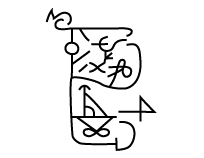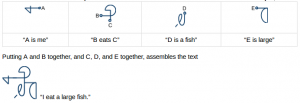How Scientists Are Learning to Write by Alexandra Ossola.
From the post:
The students tried not to look sheepish as their professor projected the article on the whiteboard, waiting for their work to be devoured by their classmates. It was the second class for the nine students, all of whom are Ph.D. candidates or post-doctoral fellows. Their assignment had been to distill their extensive research down to just three paragraphs so that the average person could understand it, and, as in any class, some showed more aptitude than others. The piece on the board was by one of the students, a Russian-born biologist.
The professor, the journalist and author Stephen Hall (with whom I took a different writing workshop last year), pointed to the word “sequencing.” “That’s jargon-ish,” he said, circling it on the board. “Even some people in the sciences don’t have an intuitive understanding of what that means.” He turned to another student in the class, an Italian native working on his doctorate in economics, for confirmation. “Yes, I didn’t know what was going on,” he said, turning to the piece’s author. The biology student wrote something in her notebook.
…
Why is better writing important?:
But explaining science is just as valuable for the lay public as it is for the scientists themselves. “Science has become more complex, more specialized—every sub-discipline has its own vocabulary,” Hall said. Scientists at all levels have to work hard to explain niche research to the general public, he added, but it’s increasingly important for the average person to understand. That’s because their research has become central to many other elements of society, influencing realms that may have previously seemed far from scientific rigors.
Olivia Wilkins, a post-doctoral fellow who studies plant genetics at New York University’s Center for Genomics and Systems Biology, recently took Hall’s four-session workshop. She wanted to be a better writer, she said, because she wanted her research to matter. “Science is a group effort. We may be in different labs at different universities, but ultimately, many of us are working towards the same goals. I want to get other people as excited about my work as I am, and I believe that one of the ways to do this is through better writing.”
…
How about that? Communicating with other people who are just as bright as you, but who don’t share the same vocabulary? Does that sound like a plausible reason to you?
I really like the closer:
“…Writing takes a lot of practice like anything else—if you don’t do it, you don’t get better. (emphasis added)”
I review standards and even offer editing advice from time to time. If you think scientists aren’t born with the ability to write, you should check out standards drafts by editors unfamiliar with how to write standards.
Citations in a variety of home grown formats, to publications that may or may not exist or be suitable for normative citation, to terminology that isn’t defined, anywhere, to contradictions between different parts, to conformance clauses that are too vague for anyone to know what is required, and many things in between.
If anything should be authored with clarity, considering that conformance should make applications interoperable, it is IT standards. Take the advice in Alexandra’s post to heart and seek out a writing course near you.
I edit and review standards so ping me if you want an estimate on how to improve your latest standard draft. (References available on request.)
I first saw this in a tweet by Gretchen Ritter.



